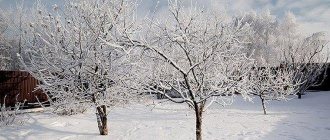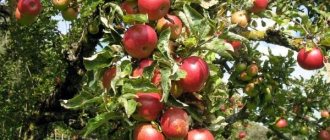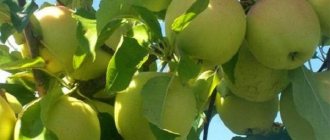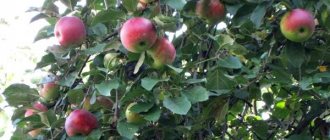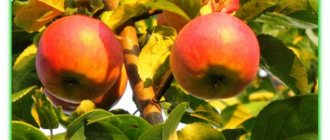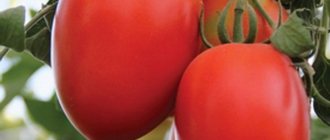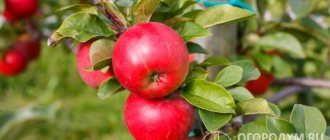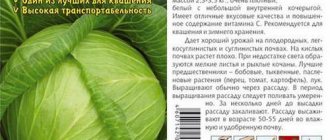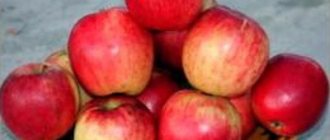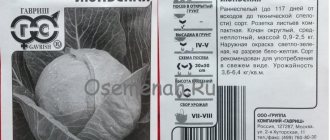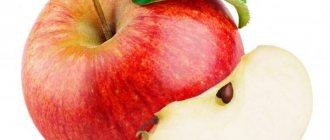At one time I thought I had a good understanding of apple trees. This was facilitated by the presence in our garden of many apple trees planted by my father.
He was an agronomist and garden enthusiast. White filling, Borovinka, Calvil snowy, Pepin Saffron. And there were 15 of them in total. And not just one. And 2-3 each. I didn’t know the exact names of other apple trees.
Jonathan was definitely not there. He gained popularity later. In the eighties, many gardeners sought to purchase and plant a Jonathan apple tree in their garden. And for good reason. It is now his clones who are trying harder to find him.
There are better opportunities. And there is more and more temptation to plant new items from the apple assortment.
Description, photo
Why was it called Jonathan? Just a version: the variety was developed by Rachel Hingley. And they named it after her husband Jonathan.
What is known for sure:
- The seeds of the Espopus Spitzenberg variety gave birth to this variety in 1862. On Philip Rick's farm in New York State, USA. And they got an apple tree - Jonathan's seedling.
- You will also find Aesop Spitzenburg.
- The Japanese call it Kougyoku.
And more interesting names. We already have:
- Winter pretty.
- Oslamoskoe.
- Winter red.
And since the end of the 19th century, Jonathan apple tree varieties have spread throughout the world. And very successfully. It is important to note the fact that even under the Soviet Union it was already in the State Register and zoned in Ukraine and the North Caucasus.
The Jonathan apple tree is distributed throughout the world.
Now about the tree itself:
- Medium-sized trees with a spherical crown shape. Not quite right. The length of the skeletal branches varies. So the ball turns out to be dented. When the tree grows, it is almost imperceptible.
- Skeletal branches do not extend from the trunk at sharp angles.
- The bark has a brownish tint. Slightly greenish.
- Fruits on ringlets, on fruit twigs, on spears. And even on annual growths.
- The shoots are not always straight. But strong. Also available with knees.
- A bluish, even silvery coating on the leaves will already allow you to determine the variety. Medium size, or even small with a matte surface. Their shape is oval.
Blooms in May. Later early and medium varieties. As if in the middle late time.
Memorable apples:
- It looks like a ball or a rounded cone. But flattened.
- The greenish color almost completely covers the dark red blush - with stripes and white dots under the skin. And with the rust mesh characteristic of the fruit.
The taste is juicy light creamy aromatic pulp (white-green when only taken from the tree) with an unforgettable dessert. As if wine-sweet.
Pros and cons of the variety
- The main advantages of the Jonathan apple tree:
- special aroma and taste of fruits;
- apples have a long shelf life;
- the plant quickly begins to bear fruit;
- the crop is suitable for any culinary processing and industrial processing;
- quite a long productive period.
- Among the disadvantages of the plant, gardeners identified the following:
- low frost resistance;
- low resistance to specific infections;
- the tree needs a pollinator “neighbor”;
- fruits require special storage conditions.
additional characteristics
Advantages and disadvantages
The advantages include:
- Jonathan's aromatic taste and juiciness;
- Long shelf life ;
- Fairly rapid entry into fruiting .
Besides the fact that you eat these wonderful fragrant apples:
- Consume prepared juices;
- Don't be lazy and prepare some wine. Such a scent!
- Pies, pies.
Use Jonathan apples in baking.
- The sauce for meat dishes with apples of this variety is something! Need to try;
- And preserves, jams, confitures.
What if this variety had no drawbacks? We definitely wouldn't see any clones grown. Therefore about them. Some problematic aspects of Jonathan apple trees:
- There are more complaints about trees. And not to the fruits;
- Low resistance to frost does not allow cultivation in areas where the climate is harsher;
- And it is weak against powdery mildew;
- Picky about storage conditions.
Required climatic conditions
The long period of its growth in various conditions determined the suitable climates:
- And this is where the winter is not very severe , but milder;
- And these are our southern regions. This is what practice has shown.
Tree height, crown width
Will fully correspond to the rootstocks you have chosen:
- Quite an impressive, but low apple tree.
- Round and from the outside looking at it, not very thick. And so, average density.
- With age, skeletal branches seem to bend (bend) more towards the ground. To make it easier for you to remove the apples.
Jonathan's branches tend to bend towards the ground.
Productivity
Precocious. Apple trees 5-6 years old produce significant yields:
- The harvest from one tree was almost 400 kg (in one article).
- But individual trees of the Sad-Giant state farm yielded 490 kg each (in another article).
Advice! Don't expect large apples with good harvests. So, calmly react to small apples weighing 100-130 g, or be happy with several dozen apples. But quite large. Like Zhvanetsky with crayfish for three and five rubles.
Tasting assessment
Even the initial 4.4-4.5 out of five points doesn’t tell the whole story.
My daughter gives them more than five! Because:
- There are different growing conditions.
- And not everyone on the same tree is the same.
And the presence of sugar is recorded from 10.5 to 11 percent. In the south of Russia - more than 11%.
Winter hardiness
Not the best. Perennial tree wood freezes.
By the way:
- Be careful and treat written recommendations with a little distrust and skepticism.
- Only one phrase stuck in my mind: “If temperatures in winter are below fifteen degrees below zero, non-frost-resistant plants may suffer.”
- In our places there were frosts of more than 30 degrees. But no one gives up on Jonathan. And even recommended. And my apple tree survived without any complications.
Jonathan can tolerate frosts below 30 degrees.
Another thing:
- He will not achieve his best performance.
- And it will ripen a little later.
- But this is Jonathan from your garden.
Disease resistance
- Low resistance to powdery mildew is one of the reasons that many breeders have tried to improve.
- With scab , the stability indicators are better, somewhere at the average level.
- There are damage caused by bacterial cancer.
Lifespan of a tree
- And your tree will live happily ever after.
- And it will delight you with excellent apples.
- If you take care of it.
Watch the description of the Jonathan apple tree in the video below:
Commercial and consumer qualities of fruits
Apples ripen in the second ten days of September. At the time of picking, they are medium in size, weighing approximately 150 g, one-dimensional, covered with a smooth, thin but tough skin. The cover color is dark red, intensely blurred, with a slight glossy sheen, sometimes with a reddish mesh. Subcutaneous white spots are visible on the fruits. The shape of apples is round or round-conical. The funnel is rusty, deep, not wide. Seed chambers are closed.
Jonathan apples (but photo) are easily recognizable both in appearance and taste
The pulp is greenish-yellow or light cream, dense and very juicy, with a pronounced pleasant aroma. It is especially appreciated for its signature wine-sweet taste, offset by a slight sourness. Tasting score – 4.5 points out of 5 .
According to laboratory studies conducted by VNIISPK specialists, in the conditions of the south of Russia its biochemical composition contains:
| Nutrients and beneficial substances | Quantity per 100 g of product |
| Vitamin C (ascorbic acid) | 6 mg |
| Sahara | 10.6-11.3 g |
| Acids | 0.65 g |
| P-active substances | 100 mg |
| Solids | 13.7 g |
Apples are universally used - used in their natural form and in the preparation of various dishes, providing high quality processed products
Apples of the “Jonathan” variety are good fresh, suitable for making juices, jams, preserves, confitures, purees, jellies, compotes, jelly, candied fruits, etc. Suitable for baking (classics of the genre - “Charlotte”, “Strudel”) and preparing sauces for meat dishes, as well as as a base for dessert wines and cider.
According to the timing of consumption, the fruits are considered winter or late winter. If storage conditions are met, they last well until the end of February (in cellars and industrial storage facilities), or even until mid-spring (in the refrigerator). At later stages of storage, the so-called “Jonathan spot” may appear and a decrease in juiciness.
Reviews
Evaluations of the variety are based on its long history of cultivation in many regions:
- Excellent apples.
- A weak tree.
Rostislav. “If you were to define the top five apples, Jonathan would definitely be in it. I'm not talking about his entire family. I bought them at the market for many years. I looked for it and planted it in my garden. I waited 4 years. And now every year I collect 3-4 buckets of good apples for winter storage. I don't see any Jonathan's disease. Because of their excellent taste, they don’t last long in our country. We eat with pleasure. And we treat our friends.”
Regina Dubtsova. “We succumbed to the general psychosis about the beautiful apples Jonathan. They planted it in their garden. They didn't cheat with the variety. But no one warned about problems with the apple tree. The tree is vigorous. Until I shortened the growth by pruning, I didn’t see normal apples - 15-20 pieces and that’s it. And those are not entirely high quality. It is imperative to treat 2-3 times with fungicides against diseases.”
Konstantin. “ Apples taste great. You won't be confused with others. You just have to be prepared to grow apples. Don't wait for them to grow up themselves. But if you have a system in the fight against diseases, 3-4 annual treatments with fungicides and against pests are enough. And fertilizing helps the tree resist diseases. By the way, no more attention than other winter varieties. This is from a very young age. You will have at least 6-8 buckets of these apples for the winter.”
Irina. “ The Jonathan apple tree variety is very popular with the whole family. The apple tree has been growing for more than 10 years. And there's still something wrong with her. Maybe I'm doing something wrong. Tell me the rules of care."
Advantages and disadvantages
The main advantages of the Jonathan apple tree are the excellent taste of the fruit, consistently high yield and early fruiting.
Apples have high rates of transportability and shelf life
Disadvantages : low resistance to powdery mildew, low level of winter hardiness, possibility of damage to apples by subcutaneous spotting during long-term storage.
Features of planting and care
Landing
Deadlines
Experts unanimously recommend planting seedlings of this variety:
- In the spring. Until the end of April.
- And what real weather conditions will tell you.
And many gardeners (including me) prefer autumn planting . And that's why:
- The apple tree seems to adapt over the winter to local conditions. And it enters spring naturally, without intervention.
- Prepared for temperature and weather.
- Just make sure the seedling has a good winter!
My observations:
- Serious nurseries work on pre-order basis. There may not be any left for spring!
Watch the video on how to plant an apple tree in spring:
And a video on how to plant an apple tree in the fall:
Technology
Purchase seedlings from nurseries or specialty stores. So that the seedling is exactly Jonathan and has a high-quality root system:
- Refresh the roots with pruning. If they are dry, place them in water for a day or two.
- Prepare the planting hole in advance: Consider the condition of the soil. It is in your power and interests to make it suitable in composition.
- Use fertile soil (sand or clay where needed).
- Apply the necessary fertilizers, including organic ones.
Buy seedlings from trusted stores and nurseries.
Important! When the soil shrinks, the root collar should be 7-10 cm above the soil level.
Distance
Choose based on the rootstock of your seedling. But not less than 4 m. Don’t forget:
- This is the distance for mature apple trees.
- Keep doubts about the allegedly excessively large distance to yourself.
Distance when planting apple trees.
Growing
Select a landing location:
- Illuminated by the sun.
- No drafts or cold winds.
- Prefers sandy and loamy soil.
- Places with high humidity provoke powdery mildew.
- It is necessary to carry out prevention against diseases.
Maybe someone will disagree:
- I once came across the opinion that copper-containing fungicides should not be used in the prevention of Jonathan’s diseases.
- What then were they going to do to counter the scab? Powdery mildew?... And then I thought. Excess humidity is the cause of these diseases. Maybe they are drier?
Agricultural technology
Plan and carry out:
- Regular fertilizing with potassium and phosphorus fertilizers
- Treatment with fungicides against diseases and insecticides against pests.
- Mulching the soil , especially after watering.
- Prepare for winter - there will be a harvest.
Mulch the soil.
Pruning and crown formation
Pruning will give you the opportunity to get rid of shortcomings. Or somehow reduce their impact. And some achieve simply amazing results.
If you purchased a Jonathan seedling from a nursery (I do not rule out the possibility of grafting it yourself), prune it in the second year. Give him the opportunity to show his abilities himself.
Use trim:
- Formative - at the beginning of growth.
- Sanitary - every spring.
- Rejuvenating - for adult apple trees.
Choose from a variety of apple tree shapes that are most suitable for the variety and your site:
- Whorled-tiered.
- Bush-shaped (cup-shaped).
- Fusiform.
- Some kind of palmette.
- That's not all. There are also cordons.
Formation of a whorled-tiered crown.
Watch the video on how to direct the growth of branches to form a crown:
Deadlines in Ukraine
The timing of pruning in Ukraine is determined by the task:
- In spring , trim dry, frozen, crossing and duplicating branches.
- In summer , regulate by pinching and breaking out young shoots.
Pollinator varieties
The gardener was asked: How does Jonathan bloom? I liked his answer: “Like an apple tree. Very beautiful!"
Although a partially self-pollinating variety , it is always seen in the company of other varieties. The results are better then.
Preference is given to the following varieties:
- Golden Delicious,
- Idared,
- Mac,
- Welsey,
- Melba.
Golden Delicious.
Idared.
Mac.
Welsey.
Melba
Attention! Jonathan's pollen is rather weak. The ovary is formed only on a third of the flowers.
Pollinator varieties for the Jonathan apple tree
The Jonathan variety is partially self-fertile - without the presence of nearby pollinating trees, approximately 1/3 of the blooming flowers are pollinated. But for good yields, other varieties of apple trees with a similar flowering period should be planted nearby.
The best pollinating trees for the Jonathan apple tree are the following varieties:
- Golden Delicious;
- Idared;
- Mac;
- Spartan;
- Ruby Dooks;
- Welsey;
- Melba.
Features of ripening and fruiting
Beginning of fruiting
- Only for 3-4 years on a dwarf rootstock.
- And others talk about 2-3 years. And 4-6 years.
- You could take the average. You yourself know that the seller has embellished everything.
- Medium-sized rootstocks - from 5 years.
Deadlines
Fruit ripening
End of September and beginning of October. And the exact timing will help you:
- Growing region.
- Weather: From spring to autumn.
- Specific for the collection period.
Fruit storage
If stored correctly in the refrigerator at a temperature of 2-3 degrees (heat), on March 8 you can please your family and friends with apples of this variety. But don't surprise. This is the norm.
There is one “but” with this variety - if the storage conditions are not met (the temperature is increased), the quality will decrease. Dark, bitter spots appear.
Advice! Store carefully without pressing or hitting.
Productivity
The variety is considered early-bearing; trees usually begin to produce a stable harvest 5-6 years after planting. At the same time, fruiting is stable and abundant. Initially, the apple tree produces up to 20 kilograms of fruit, but by the 10th year you can increase the amount of harvest to 85 kilograms.
The record figure for harvested fruits is known, it is equal to 490 kilograms. If the yield decreases or the quality of the fruit deteriorates, the plant does not have enough nutrients or water.
Features of cultivation in the regions
The taste and appearance of this variety of apples allowed it to take its rightful place among the popular and favorite apples.
Even leading positions:
- It is grown by gardeners;
- And the State Register directly recommends cultivation in the regions of the North Caucasus.
Attention! The State Register is silent in its recommendations regarding the regions of the Moscow region and the Urals. Winters are real.
In Ukraine
The climatic conditions are not nearly the same as in Ohio. There, work was carried out on the selection of this variety.
But since 1954 it has been zoned throughout Ukraine.
Optimal climatic conditions for growing
The Jonathan apple variety is common in commercial and home gardening. However, in recent years its popularity has begun to decline. One of the reasons: for the Central Russian strip, these apple trees are not winter-hardy enough. According to the recommendations of the State Register, optimal climatic conditions for their cultivation exist in the North Caucasus region .
One of the important prerequisites for the yield of “Jonathan” is planting trees in sunny places on suitable soil types (loam and sandy loam). Insufficient soil fertility and moisture deficiency affect the yield and size of the fruits: they become smaller.
Application
Apples are widely used in many areas of human life. For example, in cooking, apples can be used to prepare many different dishes. In addition to eating apples raw, you can eat them baked or bake them along with meat products. Apples are often added to salads.
Among other things, apples can be found in various cosmetic products as an auxiliary component. They accelerate skin regeneration and promote rejuvenation, which is why they can often be found in some cosmetic brands.
In cooking
If we talk about cooking apples, then indeed, you can cook a lot of things from them. You can make juice or fruit drink from spoiled apples, you can make jam or preserves, as well as delicious apple pastille, dried apple fruits or apple chips. This product is good because it does not lose its beneficial qualities after processing, so you can safely bake them, cook something from them and be sure that your body will get the maximum benefit from these cheap and tasty products.
In medicine
Apples are used in medicine in completely different ways. You can eat them as a preventive measure, or you can use them to treat various diseases, including cancer. Apples can really improve a person’s condition with serious illnesses.
Apples are especially useful for diabetics. Doctors often advise eating apples for colon cancer. Apple pulp will be useful for those who often suffer from viral and infectious diseases. If your immune system is weak and you can’t influence it in any way, add apples to your diet.
When losing weight
Apples are considered one of the most dietary foods. And although 100 grams of apples contain 47 calories, and this does not exactly apply to dietary products, there is an entire apple diet that specifically promotes weight loss. This diet is very strict, so it should only be done under the supervision of a doctor. This is a mono-diet when you eat only apples. The only rule is to eat apples in different forms. These can be juices, smoothies, fresh juices, baked or grated apples.
Specifics of planting on the site
Planting an apple tree must be carried out according to all the rules of agricultural technology so that the seedling begins to bear fruit as early as possible.
Optimal timing
An apple tree is planted in spring or autumn. But the most favorable period for planting is spring. Seedlings are planted in late March, when the soil is well warmed up. Over the summer, the seedling will have time to take root, and in the spring of next year it will begin to actively grow.
See also
Description and technology of growing Red Delicious apples
Read
Preparation of young seedlings and planting hole
They begin to prepare the area for planting apple tree seedlings 2 weeks before planting. It's even better to start preparing it in the fall. The soil is dug up, organic or mineral fertilizers are applied, and all growing weeds are pulled out.
Before planting, seedlings can be soaked in a growth activator for several hours. Immediately before planting, the root system is dipped into a liquid clay solution and immediately planted before the clay has time to dry.
Planting pattern and depth
Planting an apple tree is a simple process; if it is done correctly, the seedling will grow healthy and strong.
Apple tree planting process:
- Dig a hole 80 cm deep and 70 cm wide.
- Fill the bottom with fine drainage.
- Place the seedling in the hole and drive a strong wooden stake next to it.
- Dig a hole and tie the trunk to a stake.
- Pour generously with warm water.
When the seedling gets stronger, you can remove the stake.
Diseases and pests
There is a high risk of being affected by several diseases, except for scab, so the tree needs to be treated with fungicides.
- For powdery mildew, which manifests itself as a whitish oily coating on flowers, leaves and young growth, use Bordeaux mixture, Topaz, Skor or Hom.
- Bacterial cancer leads to massive darkening and drying of the leaves, then cracking of the wood. Antimicrobial drugs from the penicillin series are used in treatment. 1 ampoule of the substance is dissolved in 10 liters of water. Irrigate every 20 days until complete healing. If this does not help, the tree should be dug up, burned, and the growing area should be spilled with a solution of copper sulfate or Bordeaux mixture.
The apple tree can also be attacked by various harmful insects - aphids, flower beetles, codling moths, hawthorns and caterpillars. For protection and treatment, insecticides are used - Karbofos, Fitoverm or Actellik. Irrigation is carried out three times per season - in early spring, before flowering and after it.
Apple trees need proper care
To avoid infection, it is necessary to follow several important rules in growing:
- buy healthy seedlings;
- plant them according to a certain pattern;
- regularly trim diseased parts of the tree, water, fertilize;
- maintain cleanliness in the garden - every autumn, dig up, remove and burn carrion and fallen leaves.
Jonathan apple tree: agricultural technology for growing a fruit tree
Due to its good yield and unpretentiousness, this apple tree variety is ideal for growing on an industrial scale and in private backyards. But before purchasing seedlings, you need to familiarize yourself with the nuances of planting trees, choosing and preparing a site for further good growth and development of the apple tree.
Apple tree growing technology - video
Jonathan apple tree planting time
The time for planting this apple tree is spring or autumn. Moreover, in the spring the best time to plant a Jonathan apple tree is from the second ten days of April to the first ten days of May, and in the fall - the first ten days of October, so that at least 30 days have passed from the moment of planting the trees to the onset of cold weather.
But most gardeners prefer to plant any fruit trees in the spring, so that they have time to take root well and gain strength before the long winter. In the spring, seedlings are planted before sap flow begins.
Selection of planting material
Its further fruiting depends on how viable the selected apple tree seedling is. Therefore, the choice of planting material should be approached responsibly.
It is recommended to purchase Jonathan apple tree seedlings in specialized nurseries or gardening stores, where they sell healthy, strong seedlings without signs of disease or damage by insect pests.
When choosing a planting tree, you must be guided by the following requirements:
- the height of the apple tree is 1.5 m, and its age is 2 years;
- the root system must be well developed;
- trunk bark is smooth, without scratches or other damage;
- at least 4-5 strong, healthy branches.
Important!
When purchasing apple tree seedlings, you need to pay attention to the conditions in which they are stored. Apple trees should be in the shade, where it is cool and humid, because even short-term drought can have a detrimental effect on the general condition of the tree.
Choosing a site for planting an apple tree
The area for planting the Jonathan apple tree should be well lit by the sun and protected from gusts of strong winds. In the shade, this fruit tree grows and develops poorly, the vegetative mass increases slowly, apples ripen worse, and as a result, the yield of the variety suffers.
The best soil for growing this fruit tree is loam or sandstone with a loose fertile structure.
It is better to choose flat surfaces or a slight elevation for planting. The distance to the nearest trees and country buildings should be planned at least 4 m. There should be no stagnation of moisture in the soil, and groundwater can be located no closer to the soil surface than 2.5 m.
Planting holes are prepared in advance - about a month before the intended planting of apple trees. The dimensions of the hole should be slightly larger than the volume of the root system - up to 0.9 m in depth and up to 0.8 m in width.
Photo of apple tree planting scheme
The excavated and pitted soil is mixed in equal quantities with the following components:
- high peat;
- matured compost;
- rotted mullein.
If the soil on the site is heavy, then the composition of the substrate for planting the Jonathan apple tree will be slightly different - you need to mix the soil with coarse river sand and humus in equal quantities.
Tree planting
Stages of planting a Jonathan apple tree:
- The hole is filled approximately halfway with the mixture, a mound is formed from it, on which the tree is installed.
- A strong post is driven in nearby, to which the seedling will be tied. The roots are carefully spread along the slopes of the mound.
- Then the pit is filled with the remains of the nutrient substrate and compacted.
- For each tree you need to add at least 20-25 liters of water.
Further care for Jonathan apple trees
Their future productivity depends on how much care is provided to growing apple trees. Therefore, it is important to apply fertilizing on time, observe the irrigation regime, loosen the tree trunks and remove weeds.
Loosening and weeding
The tree trunk circles should be loosened at least once every 12-14 days, as well as after watering and rain. This procedure allows air to penetrate to the roots of the tree, while weeds are removed.
Irrigation regime
Although this variety of apple tree can easily tolerate periods of drought, you should still adhere to a certain watering schedule so that the tree promptly receives the moisture that is necessary for the growth of vegetative mass, the formation of ovaries and the ripening of apples.
These fruit trees should be watered in the first ten days of June, in the first ten days of July and in the fall in the process of preparing the Jonathan apple tree for winter.
Important!
The amount of moisture introduced into the tree trunks of the apple tree depends on the weather - in hot, dry times, more water needs to be added, and in the rainy season, the amount of watering should be reduced.
Feeding the fruit tree
The Jonathan apple tree should be fed according to the following scheme:
- Before budding begins, 1.5 tbsp of urea is added to each trunk circle for digging. l. nitroammophoska and ammonium nitrate, 50 kg of humus;
- During the flowering period, the following solution is added to the tree trunk circles: 100 g of superphosphate, 3 tbsp are diluted in a bucket of water. l. potassium sulfate, 2 liters of diluted bird droppings, 5 liters of slurry, 1 glass of urea;
- in July and autumn, the Jonathan apple tree is fed with the following solution: 20 g of potassium chloride and 40 g of superphosphate are dissolved in a bucket of water.
How and what to fertilize fruit trees correctly - video
Jonathan apple tree pruning
The formation of the crown begins in the next season after planting the seedling. In this case, all shoots are shortened by about 25-30 cm. This procedure is carried out in the spring, before the buds open.
In the fall, after the leaves fall, Jonathan apple trees are sanitized. At the same time, dried, damaged or diseased branches are removed, as well as those shoots that grow inside the crown and thicken it.
The cut areas must be disinfected with crushed charcoal and then covered with garden pitch.
Photo of apple tree pruning diagram
Preparing the apple tree for winter
In the process of preparing the Jonathan apple tree for winter, the following procedures are performed:
- carry out moisture-charging irrigation to saturate the root system of the apple tree with moisture;
- then apply liquid fertilizer (before the leaves begin to fall, so that the tree has time to receive nutrients);
- after the end of leaf fall, remove all plant debris from the tree trunk circles and burn them outside the site;
- the trunk circle of the apple tree is dug up to a depth of a shovel bayonet;
- then the area is mulched with peat or humus to protect the root system from frost. The thickness of such a layer must be at least 15 cm;
- the lower part of the trunk and skeletal branches of trees are painted with lime to protect them from sunburn during the winter;
- The base of the trunk and the lower part of the skeletal branches of young trees is wrapped with metal mesh to protect the bark from rodents.
How to properly prepare fruit trees for winter - video
Trimming Features
All fruit trees require regular pruning. The procedure is necessary to remove the growth of young shoots, eliminate crowding and to renew the crown. Excessive branches contribute to the formation of small fruits.
After purchasing a seedling, pruning is carried out a couple of years after planting. They carry out pruning to create a beautiful shape, and sanitary pruning to remove damaged or young branches. The owner can choose the shape, taking into account his own preferences, for example, in the shape of a spindle, a bowl, or in several tiers.
Rejuvenating pruning is performed on old trees.
This manipulation is very important for good yield, so if it is not possible to perform the procedure correctly, it is better to hire a professional.
Let's watch an interesting video about pruning apple trees:
Nutritional value and chemical composition
Composition of apples:
- vitamin A;
- B vitamins (B1, B2, B3);
- vitamin P;
- vitamin PP;
- vitamin C;
- vitamin E;
- vitamin K;
- nickel;
- calcium;
- fluorine;
- aluminum;
- boron;
- manganese;
- sodium;
- phosphorus;
- sulfur;
- molybdenum;
- potassium;
- folic acid;
- organic acid;
- copper;
- zinc;
- carotene;
- cellulose;
- magnesium;
- pectin;
- chromium;
- iron;
- proteins – 0.4 g;
- fats – 0.4 g;
- carbohydrates – 9.8 g.
Calorie content – 47 kcal per 100 grams.
Planting rules, where is it better to plant
Planting seedlings must be approached competently, following all the necessary rules:
- First you need to choose the right site. The Jonathan apple tree is a heat-loving plant, so the area should be lit and sunny, it is important to avoid shade.
- Loam and sandstone are well suited as soil. It is important that the land is not depleted; in this case, no mineral supplements or fertilizers will be able to increase productivity.
- Planting can be carried out both in spring and autumn (September-October or April). After planting in the spring, the plant tolerates winter frosts better, since its root system has time to strengthen. If you plant in the fall, then closer to spring the tree will grow more, and there is a chance of seeing fruits earlier.
- After choosing a site, the process of planting the seedling begins. It is necessary to dig a hole one meter wide and 0.7 meters deep. Pour in nutritious organic matter and mix it with regular soil (the mass should occupy one third of the hole). Now you need to hammer in a peg for the tree, it will create a support. The tree is carefully inserted and sprinkled with soil, lightly compacted.
- Fill the seedling with two buckets of water (it will take about 20-24 liters).
Be sure to mulch near the trunk.
The landing procedure is completed.
Clones of the variety
Thanks to its taste and other characteristics, the Jonathan apple tree began to produce equally popular and useful clones.
Gold (Jonagold)
The trees have a spherical crown. Resistant to cold weather. They often suffer from bacterial cancer. Fruiting begins at 3 years of age. The Gold apple tree produces about 40 kg of harvest from 9 to 12 years old. The color of the fruit is green-yellow, sometimes orange. Apples ripen at the end of September; picking can begin at the end of October.
Red (Jonared)
The crown of the tree is small. It easily tolerates severe frosts. Ripens by the end of September. The Jonared apple has a dark red hue. The clone tastes just as sweet and juicy.

